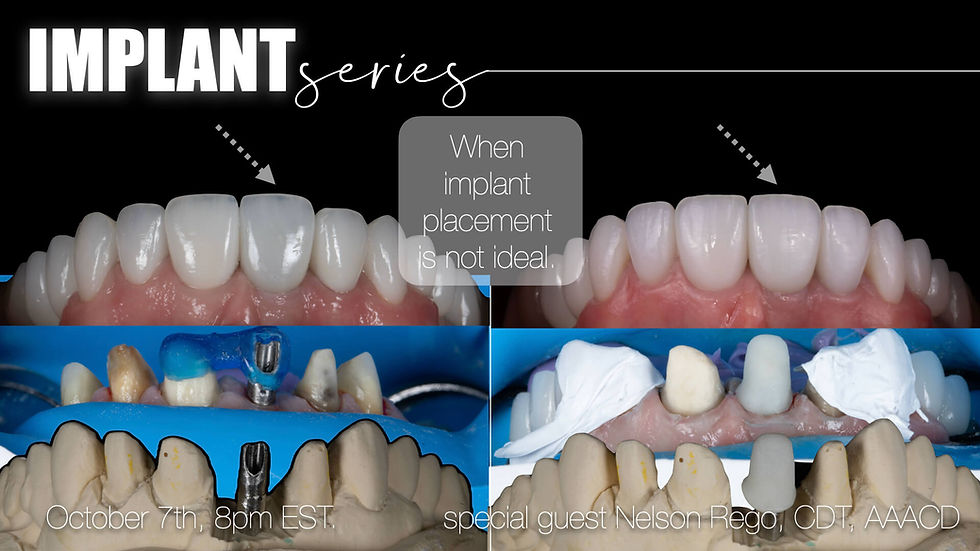Mastering Esthetics in Challenging Implant Cases
- Dr. Amanda Seay

- Oct 15
- 2 min read
Updated: 7 days ago
Are you a member? Log in to your account to watch this discussion.
In implant dentistry, success often comes down to millimeters. A shallow placement here, a misjudged contour there—and suddenly the esthetic balance of a smile is off. The harmony that patients expect and clinicians strive for depends on how precisely every step, from planning to lab work, is executed.
Shallow implant placement is one of the most common—and challenging—scenarios clinicians face in the anterior zone. When the implant sits too close to the surface, it can create a cascade of problems: limited restorative space, compromised emergence profiles, and tissue levels that no longer match the patient’s natural dentition. These small miscalculations often lead to big compromises in both form and function.

The solution, as discussed in this case review with Dr. Amanda Seay and Nelson Rego, CDT, begins long before the restoration is seated. It starts with photography—not just for documentation, but as a diagnostic and communication tool. Consistent vertical and horizontal reference points captured through high-quality images guide every subsequent decision, from abutment design to shade selection.
When restorative space is tight, creativity and collaboration take center stage. Custom abutments can be prepped to rebuild ideal contours. Impression techniques must be executed with precision to preserve tissue form. Even epoxy dyes, often overlooked, can reveal critical details that ensure accuracy as information passes from the clinic to the lab.
Color adds another layer of complexity. Over-prepped teeth and thin restorative materials can distort how light interacts with the final restoration. Evaluating value and shade harmony—both in temporaries and finals—becomes essential. Sometimes, the most revealing view isn’t in full color at all, but in black-and-white photography, which exposes subtle value discrepancies invisible to the eye.
Every detail matters. The depth of the implant, the thickness of the tissue, the precision of the restorative design—each element plays a part in achieving esthetic balance. When the clinician and ceramist work in sync, those micro-adjustments add up to something greater: a seamless, lifelike result that looks effortless but is anything but.
In the end, it’s a reminder that in implant dentistry, beauty is built on precision. The smallest corrections can transform not just a smile, but the entire perception of what’s possible when art and science align.
This case discussion is included in the Case Continuum.
Are you a member? Log in to your account to watch this discussion.



